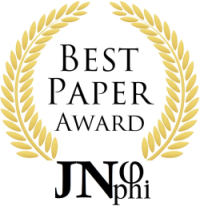Theory of Mind, Phenomenology, and the Double Empathy Problem
Abstract
According to some neurocognitive studies, autistic people do not have a theory of mind (ToM); this means that they are unable to interpret the thoughts, beliefs and intentions of others just by observing their behaviour and/or listening to what they say and how they say it. By contrast, researchers from phenomenology claim that autistic people experience issues in earlier forms of intersubjectivity and that in some cases a ToM may be used to compensate for issues in empathy. My purpose is to present both the ToM account, along with its internal accounts (theory-theory, simulation theory, theory of mind mechanism), and an overview of phenomenology, followed by the presentation of some of the phenomenological counterarguments to ToM. Finally, I argue that both the neurocognitive approach and the phenomenological view seem to assume that issues reside in autistic people only and do not take into account the communication gap between autistic people and non-autistic people. As recent studies claim, autistic people are able to understand other autistic people, while they experience difficulties in communication when involved in intersubjective relations with non-autistic people. This mismatch between the two groups has been labelled the double empathy problem, and I propose that ToM and phenomenology may offer their support to this new perspective.
Keywords:
theory of mind, phenomenology, double empathy problem, intersubjectivity, autismDownloads
Metrics
References
Baron-Cohen S. The empathizing-systemizing theory of autism. Annals of the New York Academy of Sciences 2009; 1156:68-80. doi: 10.1111/j.1749-6632.2009.04467.
Baron-Cohen S, Leslie AM, Frith U. Does the autistic child have a ‘‘theory of mind’’? Cognition 1985; 21(1):37-46. doi:10.1016/0010-0277(85)90022-8.
Baron-Cohen S, Ring HA, Bullmore ET, Wheelwright S, Ashwin C, Williams SC. The amygdala theory of autism. Neuroscience and Biobehavioral Reviews 2000; 24(3):355-364. doi: https://doi.org/10.1016/s0149-7634(00)00011-7.
Bogdashina O. Sensory perceptual issues in autism and Asperger syndrome. Jessica Kingsley Publishers; 2016.
Casanova EL, Casanova MF. Defining autism: A guide to brain, biology, and behavior. Jessica Kingsley Publishers; 2018.
Downloads
Published
How to Cite
License
Copyright (c) 2023 Elisabetta Angela Rizzo

This work is licensed under a Creative Commons Attribution-NonCommercial-ShareAlike 4.0 International License.
Authors continue to hold copyright with no restrictions.














